Reflections: Ralph M. Richard
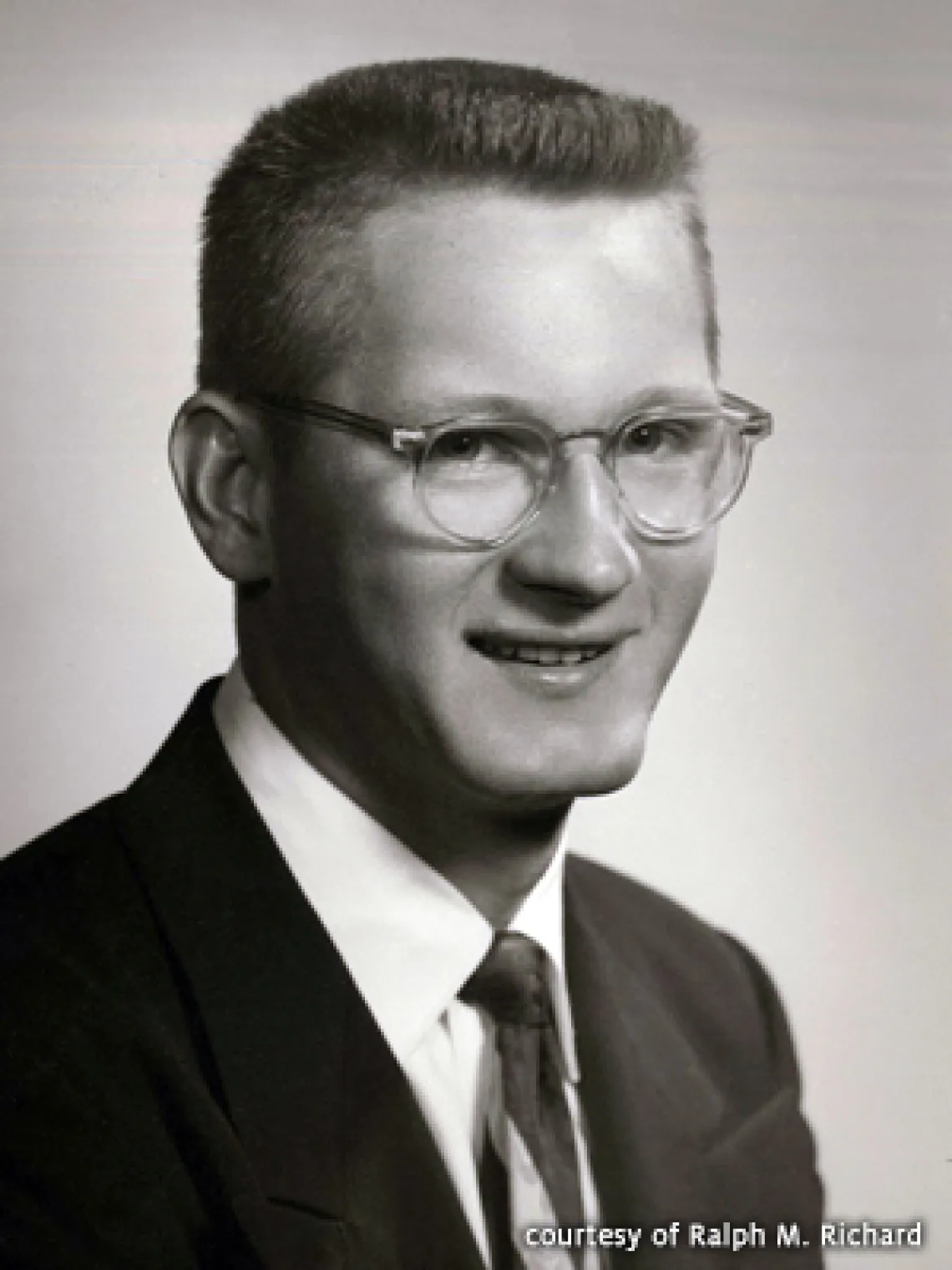
Optomechanics involves the design of structural and mechanical systems for the support and positioning of the optical elements in optical instruments. (Ralph M. Richard)
The discipline of optomechanics is arguably as old as optics—beginning when Galileo designed the tube of his first telescope. Throughout history, many great scientists were unable to solve difficult problems until they first solved instrumentation problems—and today, optomechanical systems are essential to virtually every industry.
Since joining the Optical Sciences Center (OSC) in 1972, Professor Emeritus Ralph M. Richard combined his civil engineering training with his interest in optics to support various research projects in OSC, and to lead the effort to develop an optomechanics track, supplemented with courses from the Department of Aerospace and Mechanical engineering.
Early Life
Born 15 December 1930 to Clarence and Verna Richard, Ralph and his nine sisters and three brothers grew up on a dairy farm in northern Indiana. Work on the farm was seven days a week, starting at 4:45 a.m. and ending around 7:00 p.m., with Ralph and his siblings pitching in before and after school. Summer school vacation at their country school was for five months—May to September—when most of the planting and harvesting of crops were done. Ralph was driving a tractor at the age of eight and repairing and welding farm equipment at 12. From the eighth grade on, he ran the milking machines for 40 cows.
In 1941, when the United States entered World War II, a lot changed in rural America—even far from the fighting, lives and livelihoods were affected. Ralph recalls reading newspaper articles written by Ernie Pyle, the Pulitzer winning journalist and war correspondent, and listening to radio reports while in the dairy barn. Three of Ralph’s sisters served in the military, joining the women’s branch of the U.S. Naval Reserve, WAVES (Women Accepted for Volunteer Emergency Service), and the U.S. Army Nurse Corps.
Education and Early Career
After graduating from high school, Ralph entered the University of Notre Dame as a civil engineering student. He chose Notre Dame because of its proximity to home and a high recommendation by a family friend. His visions of being involved in the construction of bridges, highways and buildings prompted him to major in civil engineering. Feeling quite unprepared for the academic rigors of Notre Dame, Ralph learned the basics of trigonometry, logarithms and how to use a slide rule from his two roommates during the first week of classes; both had graduated from prestigious college-prep high schools.
Upon being awarded his Bachelor of Science in Civil Engineering (BSCE, Cum Laude) in 1952, Ralph accepted a position as a structural engineer at McDonnell Aircraft Corp. in St. Louis, Missouri, and enrolled in the civil engineering master’s program at Washington University. While at McDonnell, he designed a ramjet engine test enclosure. However, Ralph’s time at McDonnell and at Washington University were cut short when he was drafted into the U.S. Army in 1953, toward the end of the Korean War.
After completing his basic training at Fort Riley in Kansas and a Counterintelligence Investigations Course at Fort Holabird in Maryland, Ralph was assigned as an Army Counterintelligence Special Agent in Fort Wayne, Indiana. In 1955, he returned to Washington University as an instructor and to complete his Master of Science in Civil Engineering (MSCE, 1956). Ralph then resumed his work with McDonnell Aircraft, developing methods of missile design and writing McDonnell’s first Finite Element Analysis (FEA) program on their IBM 704 digital computer.
In 1958, Ralph became an instructor at the University of Notre Dame. In 1959, he took a leave of absence to enroll in Purdue University’s structural mechanics PhD program. His research at Purdue focused on developing methods of non-linear structural analysis—methods he continued to develop throughout his entire career. After receiving his PhD in 1961, Ralph returned to the University of Notre Dame as an assistant professor.
The University of Arizona
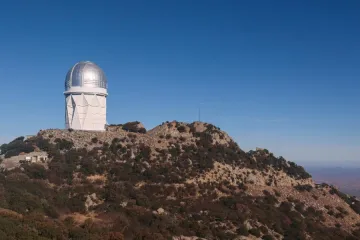
Two years later, Ralph joined the University of Arizona College of Engineering as an associate professor in Civil Engineering. Shortly after being promoted to professor in 1965, Ralph began consulting for General Dynamics Corp., where he was involved with writing, installing and instructing and applying the Finite Element Analysis (FEA) method to the design of the F111 and F16 aircraft.
Ralph had his first experience designing optical structures when, as a consultant for the National Optical Astronomy Observatory (NOAO), he used FEA in the structural design of the Mayall 4-m telescope on Kitt Peak. Named for the former director of Kitt Peak National Observatory (KPNO), Nicholas Mayall, this eighteen-story telescope was the second largest by aperture in the world at the time of its dedication in 1973.
It was during Ralph’s work on this project that he met OSC’s director, Aden Meinel. In 1972, Meinel offered him a joint faculty appointment in optical sciences at OSC. In the following years, Ralph would combine his knowledge of optics and engineering mechanics to assist with several high-profile telescope projects, and to initiate the inclusion of optomechanics into OSC’s program of study.
Multiple Mirror Telescope (MMT)
Perhaps one of the most innovative projects during the 1970s was the construction of a multi-mirror telescope (MMT), installed near Amado, Arizona, on Mount Hopkins at the Fred Lawrence Whipple Observatory. Meinel proposed the idea of taking six lightweight, fused-silica mirrors, which had become available as surplus optical components, and combining them into a single large telescope. The instrument was an array of six 72-in. diameter telescopes, each consisting of a parabolic primary mirror and hyperbolic secondary mounted on the corners of a hexagon—a design that would have profound implications on the shape and nature of large optical telescopes in the future.
Some unique fabrication problems were inherent in the MMT—involving the prediction of the magnitude and nature of the elastic deformation of the mirror surface due to mechanical and thermal load. Ralph, along with Professor Allan Malvick, was asked to evaluate and design the support system for the MMT—using the same FEA programs he had written for General Dynamics. The results of their analytical and experimental studies were published in Applied Optics in 1973. (R. M. Richard and A. J. Malvick, “Elastic Deformation of Lightweight Mirrors,” Appl. Opt. 12(6): 1220-1226, June 1973)
Introducing Optomechanics to OSC
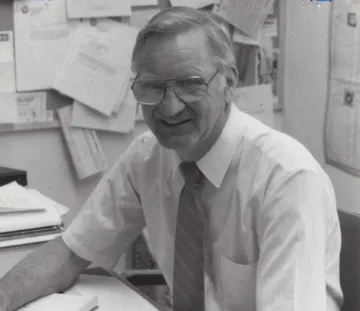
Shortly after joining the Civil Engineering faculty in 1963, Ralph initiated five new courses at the graduate level in engineering mechanics and applied math; and petitioned the Arizona Board of Regents to change the department name to Civil Engineering and Engineering Mechanics (CEEM). Meinel supported Ralph’s efforts, recognizing the importance of interdisciplinary programs as a powerful learning experience.
Consequently, graduate students became more involved in the research programs of OSC faculty, and in projects in the large and small optics shops. There, the optical components for both large and small optical instruments were manufactured —components that ranged from the primary mirror for a huge telescope in South America to a tiny but crucial lens for a delicate laboratory instrument.
In the 1980s, in response to industry needs, OSC created an undergraduate degree program in optical engineering. Today the Bachelor of Science in Optical Science Engineering (BSOSE), jointly administered with the UA College of Engineering, allows students to select one of four interdisciplinary tracks within the program—including an optomechanics track, focusing on the design, analysis and control of mechanical systems.
Computer Aided Design (CAD) at OSC
If you look back through the yearly OSC staff directories prior to the late 1980s, you will see listings for three or four mechanical drafting technicians and photos of an office in the machine shop—filled with drawing boards, T-squares and other drafting devices. As part of the mechanical design group, these talented draftsmen/draftswomen manually prepared very detailed drawings for numerous projects, such as optical support structures and testing apparatus.
In 1984, while lecturing on the FEA method to engineers at IBM in Endicott, New York, Ralph learned of a Computer Aided Design (CAD) program they used. Realizing the impact such a program could have on technical design, he enlisted the help of Don Hillman (Manager, Research Programs) and Bobbie Doss (Administrative Assistant, Payroll/Personnel) to purchase hardware and software needed to launch AutoCAD at OSC. The transition to CAD drafting was well received and changed the way the mechanical design group worked—being able to start design during concept development, and to have unlimited opportunities to revise that design completely.
Civil Engineering and Engineering Mechanics (CEEM)
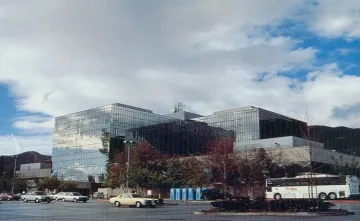
Along with the many research and development projects Ralph was involved with at OSC, he also typically taught two courses each semester in the College of Engineering. Over his career as a professor of CEEM, Ralph mentored 82 masters and 24 doctoral students—all who participated in his research programs involving the analysis and design of steel structures and optical instruments.
In 1975, as a consultant to Welton Beckett Architects & Engineers, Ralph developed the rationale for the innovative seismic design of the Olive View-UCLA Medical Center in Sylmar, California—built on the site of the Olive View Medical Center that was damaged beyond repair during the 6.1 1971 San Fernando earthquake. Based upon his recommendation, the rebuilt hospital was constructed with steel-plate shear walls, rather than concrete shear walls.
The true test of the design came almost 20 years later during the 1994 Northridge earthquake. Located just 10 miles from the epicenter of this 6.8 earthquake—where measured ground accelerations were 0.90g horizontal and 0.82g vertical, with lateral ground amplitude displacement of 13”—this six-story structure, with a glass façade, suffered only minor structural damage. Much to the delight of Ralph, not a single glass panel was fractured!
Retirement (or Quasi-Retirement)
Ralph retired from the University of Arizona in 1990 and was appointed Professor Emeritus of Optical Sciences and Professor Emeritus of Civil Engineering and Engineering Mechanics. Although retired, he continued to work pro-bono with OSC’s large optics laboratory; informally mentored several graduate students; and co-founded two companies specializing in the design of seismic resistant structures—Seismic Structural Design Associates, Inc. and Allen BRB, LLC.
Seismic Structural Design Associates, Inc. (SSDA)
Even though the Olive View-UCLA Medical Center performed well, the Northridge earthquake had damaged steel beam-to-steel column connections in some 400 single and multi-story buildings. After reviewing the damage, Ralph and Jay Allen co-founded Seismic Structural Design Associates Inc. (SSDA), and patented both a new SlottedWeb moment connection and a mode of repair for fractured connections. (Longitudinal slots are cut to separate beam flanges from the beam web in the region of the connection, and the beam web is welded to the column flange.)
These cost-effective connections greatly extend the connection’s seismic cyclic life and have gained wide-spread acceptance by structural engineers—now used in over 800 buildings in seismic regions of the U. S. and Canada. To date, SSDA has been assigned eight patents on the design of earthquake resistant structural building frames. (https://slottedweb.com)
Allen BRB, LLC
Allen BRB, LLC specializes in the design and fabrication of a special Buckling Restrained Brace (BRB) for buildings in seismic regions that use braced frames to resist lateral seismic forces. Prequalification testing of this proprietary brace has been made at the Structural Engineering Laboratory at the University of California, Berkeley.
Publications, Professional Societies and Awards
Over the years, Ralph has lectured and authored papers on the design of steel connections and lateral bracing systems, including steel-plate shear walls. He has also published papers and lectured on the design of support systems for vibration and shock isolation of high-resolution optical components and electronic systems.
Ralph is a member of the American Society of Civil Engineers (ASCE) and the Structural Engineers Association of Arizona. He is a registered engineer in Arizona and California, and his professional appointments include the American Institute of Steel Construction (AISC), the American Iron and Steel Institute (AISI) and the ASCE Committees on Steel Construction.
In 1986, Ralph received the AISC’s T. R. Higgins Leadership Award for his research and publications on single-plate framing connections. In 1990, he was selected to give a keynote address at the Firth of Forth Centenary Bridge Conference in Edinburgh, Scotland. (Completed in 1890, the Firth Bridge is a cantilever railway bridge across the Firth of Forth in the east of Scotland. Considered a symbol of Scotland—having been voted Scotland’s greatest man-made wonder—the bridge is a UNESCO World Heritage Site.)
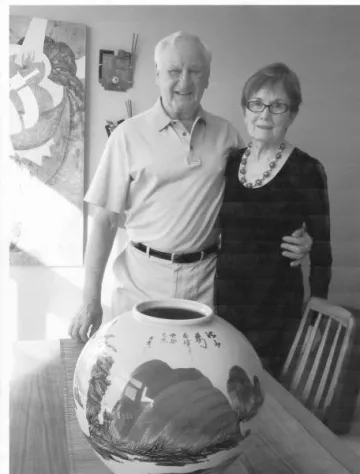
In 2007, as testament to Ralph’s outstanding leadership and instruction both within and beyond the classroom, he was awarded the Centennial Professor Award by the Department of Civil Engineering and Engineering Mechanics (CEEM). This prestigious award recognizes faculty with a distinguished record of contributions to the department, its students and the profession.
Life Beyond Retirement
Ralph and his wife, Sue, enjoy the “cruise mode” of vacation and travel. Over the last 30 years of retirement, they have visited 91 countries, including an around the world trip which was an early goal of theirs. They also enjoy spending time with their blended family of seven children, 12 grandchildren and four great-grandchildren.
